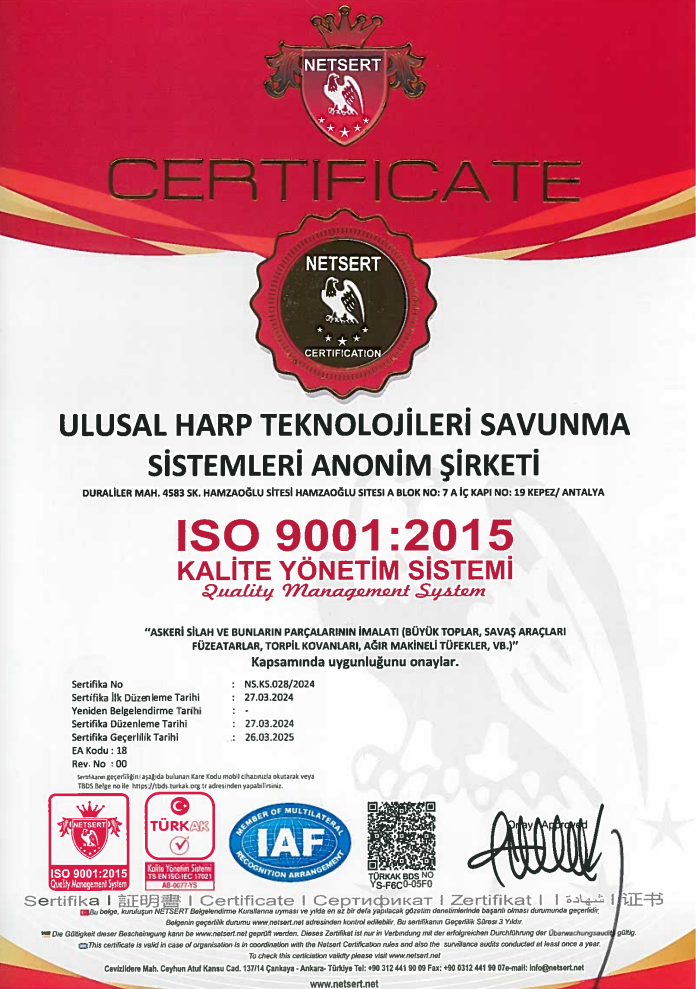


Founded in 2016 with the vision of making its mark in the field of electronic warfare with 100 percent domestic capital, Ulusal Harp Teknolojileri Savunma Sistemleri A.Ş. (Ulusal Savunma) is today a company that is specialised in the development of anti-drone systems. Operating with a team with more than 50 years of cumulative experience working on RF systems since 1996, Ulusal Savunma’s expertise is based primarily on its workforce. The jammer systems developed and produced by the this workforce are being employed to great effect and success in many units of the Turkish Armed Forces (TAF). The same approach is being applied in the development of anti-drone systems by the company that are already serving in the defence of many critical institutions and organisations,
providing protection against threats from drones, known also as mini unmanned aerial vehicles (mini UAVs). Ulusal Savunma keeps the needs of its users in focus, and develops its products based on their feedback, making use of user experience gained in the field. The company currently has a wide range of products that can address a wide variety of needs, but can also create tailored solutions based on end-users requirements when necessary.
The success of the company’s user-specific products is reflected in its turnover, which doubled between 2015 and 2017, and has continued its rise between 2018 and 2020.
Through investments planned for the near future, Ulusal Savunma will establish the world's largest and most advanced R&D and production facility for anti-drone systems. Ulusal Savunma has already purchased a 4,000 m22plot of land in Antalya,
thus taking the first steps in this investment that will turn Turkey into a market leader in anti-drone systems. Among Ulusal Savunma’s leading objectives is to increase the indigenousness of its products by sourcing its batteries from domestic producers, as one of the most critical components in the anti-drone systems it develops.

Anti-drone systems developed by Ulusal Savunma have been put to work in the protection of many critical public institutions and military units from drone (mini UAV) incursions.
For some our references click here.




